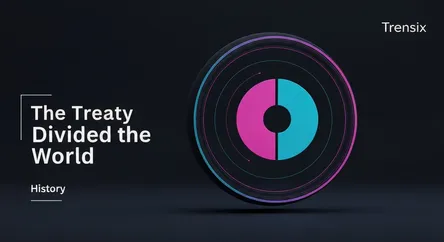History
The Treaty That Divided the World

An explanation of the 1494 treaty where Spain and Portugal agreed to divide the newly discovered lands of the world between themselves.
What is it?
The Treaty of Tordesillas was a landmark agreement signed on June 7, 1494, between the kingdoms of Spain and Portugal. It aimed to settle conflicts over newly discovered lands by dividing the world outside of Europe into two exclusive spheres of influence. The agreement established an imaginary demarcation line from pole to pole, 370 leagues west of the Cape Verde Islands. All lands to the west of this line were declared to be Spain's for exploration and conquest, while the lands to the east were designated to Portugal.
Why is it trending?
The treaty remains a pivotal event for understanding modern world history. It represents the height of Iberian ambition during the Age of Discovery and provides a key explanation for the geopolitical and cultural layout of the Americas. For instance, it is the historical reason why Brazil became a Portuguese-speaking nation in a predominantly Spanish-speaking continent. The treaty's sheer audacity and its complete disregard for the native populations of the lands being divided make it a continued topic of discussion regarding the legacy of colonialism.
How does it affect people?
The treaty's impact was profound and long-lasting. For the indigenous peoples of the Americas, it provided a European justification for colonization and the seizure of their territories. It effectively sanctioned the expansion of the Spanish and Portuguese empires, shaping the linguistic, cultural, and political maps of continents. The consequences are still evident today in the languages spoken and the national identities of Latin America. Although other European powers like England and France later disregarded the agreement, it was the foundational document that dictated the initial wave of European global expansion.